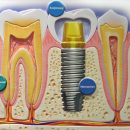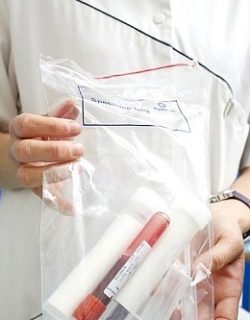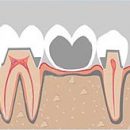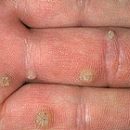Spermogram results may indicate other diseases: prostatitis, various infections. As part of this article, we will describe in detail about all the intricacies of this procedure, as well as to decipher its results.
How do the material for analysis
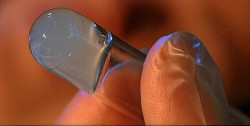
Masturbation is considered the most optimal method of obtaining sperm for analysis. Collecting cum into the condom is not recommended due to direct exposure to spermatozooid lubricants. Interrupted sexual act as a method for collecting material is also not considered, since sperm cells can shiver with cells of vaginal origin. Quite rarely (in cases of complete impotence) It is resorted to electroaculation: the patient under local anesthesia through anus is introduced by electrodes and with a current of a certain frequency cause ejaculation.
Before collecting material, the patient is better to refrain from sex within 4-5 days. The procedure is usually carried out in the clinic, which allows specialists to start analyzing immediately after the sperm becomes more liquid.
Ejaculate analysis: Main characteristics

Ejaculate color.
The overwhelming majority of men has a grayish white shade. However, for modern diagnosis, the color, as however, the smell, seed fluid does not carry any information.
Ejaculate acidity (pH).
The hydrogen indicator of the seed fluid is an important component of the analysis when a verdict is issued on the state of the reproductive and sexual function of a man. Ejaculatte without deviations should have a weakly alkaline reaction (pH 7.2-8.0). If the acidity indicators are overestimated or underestimated, but the remaining sperm characteristics are normal, then this fact, as a rule, does not indicate any violations in the body. However, in the presence of other alarming deviations, acidity indicators directly affect the diagnosis.
For example, the increased acidity of seed fluid under poor-quality sperm disclosure «hint» Specialist on the need for additional verification of the prostate gland to identify possible diseases of infectious origin. Reduced pH indicators with azoospermia (lack of spermatozoa in seed) indicates its obstructive nature (active spermatozoa is there, but the seed-thrust ducts are blocked).
Number of spermatozoa.
Studying a spermogram, the doctor first draws attention to the amount of spermatozoa. To determine this quantitative indicator use different microscopic design devices. The most accurate is considered hot chamber, originally designed to calculate blood cells. In a normal seed fluid, no less than 20 million spermatozoons per 1 ml and should be at least 40 million in total sperm.
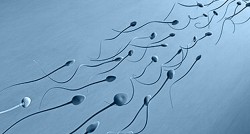
Mobility spermatozoa.
In importance, this indicator is not inferior to the number of ejaculate, because it is from the activity of a sperm depends, whether he can be one of the first to achieve the goal and fertilize the egg. Spermatozoa is divided into 4 categories of mobility:
- Category A combines quick and straightforwards in the nature of the movement of sperm, which move at a speed of 0.025 mm / s;
- Category in sperm, the speed of which is less than 0.025 mm / s, but the trajectory of their movement is straight;
- Categories with spermatozoa, moving indirecturally (such moves in a circle or fluctuate in one place);
- In category D Absolutely fixed spermatozoa.
In seed fluid, there are usually all the categories of spermatozoa activity. Normally, the number of progressive and movable sperm categories A and B should be at least half of the total mass.
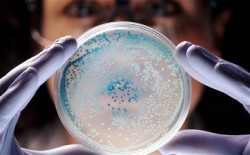
Spergglutination.
This term denotes the process of gluing spermatozoa - a sign of serious failures in the work of the immune system. In itself, gluing directly to the reproductive function does not affect, as it affects mostly a small amount of sperm. At the same time, agglutination may indicate the presence of antispermal antibodies in the seed fluid, which can provoke infertility.
Spermagglutination is not easy to recognize immediately, it is often confused with another concept - spermaging. However, the aggregation of spermatozoa for fertile properties of sperm does not affect. The term denotes gluing due to non-immune reasons, and the mucus present in the seed fluid.
In addition to spermatozoa, the ejaculate also includes rounded cells - leukocytes and immature spermatogenesis cells, that is, cells, due to which mature spermatozooids are formed in the testicles. Normal number of leukocytes in sperm is 1 million / ml. Increased concentration speaks of a possible inflammatory process in the apparent germ glanes. From immature cells spermatogenesis leukocytes are distinguished by a special sperm coloring method.
All indicators and norms in the sperm - numbers are very relative and conditional, therefore, only the competent doctor of the reproductist will be able to give an objective assessment of the characteristics of the seed fluid under study.

